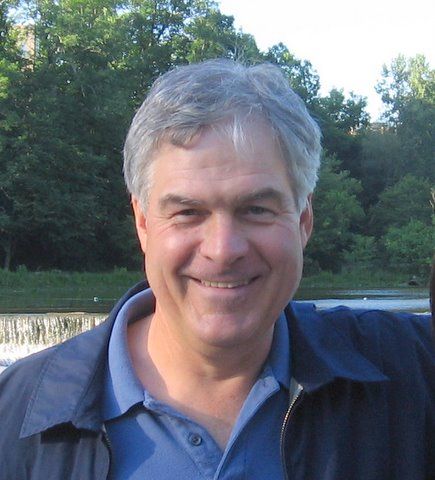Safe Places
My wife and I drove into Philadelphia so I could get fitted for a custom brace for my arthritic ankle. I don’t know if it’ll do any good; but it’s worth a try. While we were in the city, we decided to make a day of it.
We walked up to Washington Square, a six-acre park in Center City that features a statue of George Washington, as well as the tomb of an unknown Revolutionary war soldier. To me, the Revolutionary war seems abstract and far away. But this park is set on the site of a former cemetery. And when you stand in the park, gazing at the statue of Washington and the tomb, and realize there are hundreds of dead soldiers buried under this park, under your very feet, it brings home the terror and tragedy of even a long-ago war.
.jpg) |
| George Washington and the tomb of the Unknown Soldier |
We continued to the Curtis building, on the north edge on the park, once the headquarters of the company that published the Saturday Evening Post — famous for its Norman Rockwell cover art — as well as Ladies Home Journal, Jack and Jill and several other publications. Now the building has been developed into apartments and offices, and features a fountain and a wall-size mosaic in the lobby.
.JPG) .JPG) |
| The museum at the corner of 7th St. and Arch, north of Washington Square |
Our real destination, though, was the nearby African American museum, founded during the 1976 bicentennial, the first museum funded by a municipality to preserve the heritage of African Americans.
The first floor offers a panoramic history of the struggle to overcome slavery from the Declaration of Independence to the Civil War era. The second floor focuses on art — some abstract pieces representing visual poetry, and a group of paintings by Miami artist Purvis Young (1943 – 2010). He painted scenes on whatever surfaces he could find — scraps of wood, pieces of cardboard, automobile hubcaps and other trash he picked up in his neighborhood.
.JPG) .JPG) |
| A Derrick Adams collage with Green Book in background |
My favorite exhibit was the Derrick Adams installation called Sanctuary, a group of paintings, sculptures and collages inspired by The Negro Motorist Green Book, an annual guide for black American travelers published from 1936 to 1967 by New York postal worker Victor Hugo Green.
.JPG) .JPG) |
| “Keep Your Head Down and Your Eyes Open” features driving hats that represent cars |
You might be familiar with the book if you saw the 2018 movie Green Book, starring Viggo Mortensen and Mahershala Ali, which followed the story of a black piano player on tour through the American South in 1962.
.JPG) .JPG) |
| From the Green Book — Mr. Green had a sense of humor |
The exhibit is set against a background of facsimile pages from the actual Green Book, listing hotels, restaurants, beauty salons and other “safe places” across the United States. Of course there were listings in Arkansas and Alabama. But there were also safe places for New York and Massachusetts … because discrimination knew no region or boundary, and people needed places of safety and refuge even in the Northeast.























